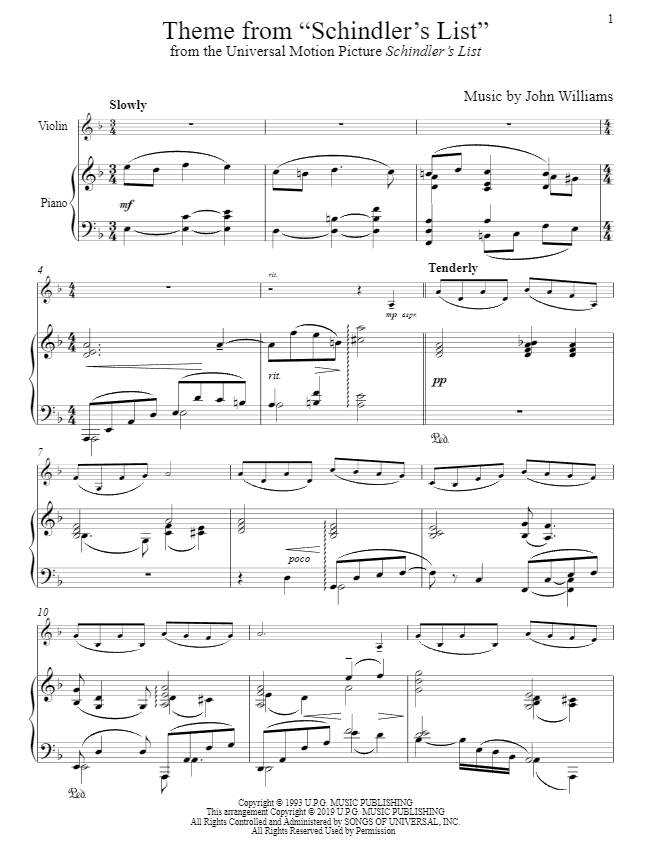The Schindler’s List theme, composed by the legendary John Williams, is renowned for its emotional depth and evocative melodies. As a result, many pianists and music enthusiasts wonder if this iconic piece is appropriate for piano.
In this blog post, we’ll explore the history of the Schindler’s List theme, its emotional impact, and how it translates to piano performances.
The History of the Schindler's List Theme
The theme for Schindler’s List was created for the 1993 film directed by Steven Spielberg. It tells the story of Oskar Schindler, a German businessman who saved the lives of more than a thousand Polish Jews during the Holocaust. John Williams‘ score captures the essence of the film, perfectly conveying the emotions of the characters and the events that unfold.
The Emotional Impact of the Schindler's List Theme
The violin solo in the theme has become synonymous with the film and represents the heart-wrenching emotions and struggles of the characters. Its haunting melody evokes a sense of longing, sorrow, and ultimately, hope. The piece is a testament to the resilience of the human spirit and the power of music to stir emotions and capture the essence of a story.
Download Sheet Music
Translating the Theme to Piano
While the original Schindler’s List theme features a violin as the lead instrument, it can be beautifully adapted for piano performances. The melody, with its rich harmonies and expressive phrasing, lends itself well to the piano’s tonal range and expressive capabilities. Pianists can effectively convey the emotional weight of the piece, and the result can be a powerful and moving performance.
Tips for Playing the Schindler's List Theme on Piano
When playing the Schindler’s List theme on the piano, it’s essential to focus on the emotional content of the piece. Here are some tips to help you capture the essence of the theme:
- Pay attention to dynamics: The theme’s emotional impact is heavily reliant on its dynamic contrasts. Be sure to emphasize the crescendos and decrescendos to create a sense of tension and release.
- Use expressive phrasing: The melody should be played with a sense of longing and fluidity. Connect the notes smoothly and use rubato to add emotional depth to your performance.
- Don’t rush the tempo: The theme’s impact comes from its slow, deliberate pace. Maintain a steady tempo and allow the music to breathe.
Schindler's List - Main Theme (Piano Version)
The Schindler’s List theme is not only appropriate for piano but can be a moving and powerful performance piece when played with sensitivity and emotional depth. By understanding the history and emotional impact of the theme, pianists can effectively translate the haunting melody and rich harmonies to create an unforgettable experience for their audience.

